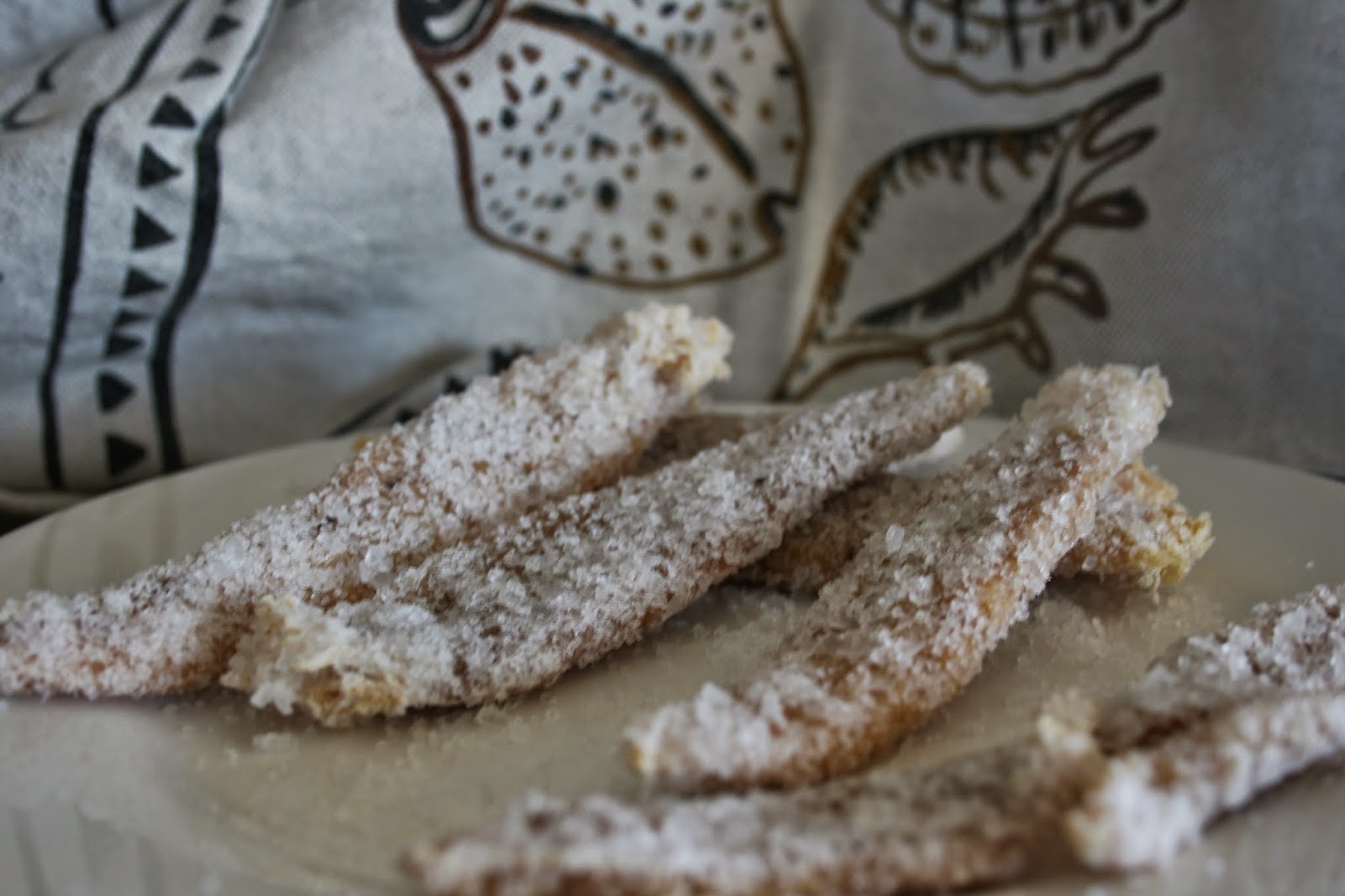As my own father disliked crumbed food I had never eaten breadcrumbed, fried zucchini until my husband cooked it for me early in our relationship.
We grow zucchini in our garden all year around. Each plant lasts for about 2 months at which time we start off another 4 plants for a continual supply of flowers to stuff, and zucchinis to enjoy.
Slice the zucchini lengthwise into 5mm slices.
Beat two eggs with 2 tablespoons milk in a bowl. Place 1 cup fresh breadcrumbs mixed with 1/2 cup dried breadcrumbs and 1/3 cup freshly grated parmesan cheese into another bowl.
Dip the zucchini slices into the egg than transfer to the breadcrumbs and coat on each side.
Place onto a plate ready for frying.
Heat a medium size frying pan to medium high heat.
Pour in 1/2 cup vegetable or canola oil and let it heat for 1 minute.
Gently place zucchini slices into the oil, ensure they are not touching.
Fry for 1 - 2 minutes for the first side, gently turn over and fry second side for 1 -2 minutes.
Place onto a paper towel lined platter to drain.
Sprinkle with fine sea salt and freshly cracked black pepper.
 |
Enjoy alone, or with crusty bread or as a side dish with a main meal.
These can be enjoyed hot but are equally good at room temperature.
If you don't cook them all the readily prepared zucchini slices can be stored in the fridge overnight,
either uncooked ready for frying, or cooked.
These can be enjoyed hot but are equally good at room temperature.
If you don't cook them all the readily prepared zucchini slices can be stored in the fridge overnight,
either uncooked ready for frying, or cooked.
~~~~~~~~~~~~~~~~~~~~~~~~~~~~~~~~~~
Fried Parmesan Zucchini Slices
2 zucchini
2 eggs
2 tablespoons milk
1 cup fresh breadcrumbs
1/2 cup dried breadcrumbs
1/3 cup parmesan cheese, grated
Vegetable oil for shallow frying
(Vegetable oil keeps the zucchini crisp, olive oil will make them soggy)
Slice the zucchini lengthwise into 5mm slices.
Beat two eggs with 2 tablespoons milk in a bowl.
Place fresh and dried breadcrumbs with the freshly grated parmesan cheese into another bowl.
Dip the zucchini slices into the egg than transfer to the breadcrumbs and coat on each side.
Place onto a plate ready for frying.
Heat a medium sized frying pan over medium high heat.
Pour in 1/2 cup vegetable or canola oil and let that heat for 1 minute.
Gently place zucchini slices into the oil, ensure they are not touching.
Fry for 1 - 2 minutes for the first side, gently turn over and fry second side for 1 -2 minutes or until lightly golden brown. Add a little more oil between batches.
Place onto a paper towel lined platter to drain.
Sprinkle with fine sea salt and freshly cracked black pepper.
Buon appetito, enjoy Merryn xx






















































